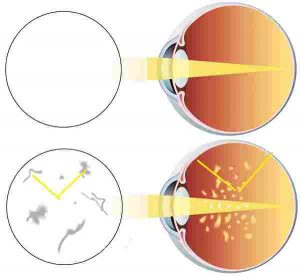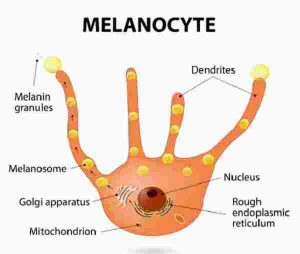FAQ
Frequently Asked Questions about eye care, eyewear and vision. You can’t always see eye disease coming is why you need an eye exam for good vision for life.
Damage from sun diabetes, hypertension,cancers,nutritional deficiencies among many other possibilities such as strabismus.
Yes. Because subjective responses are crossed checked with objective findings and instrumentation. The purpose is to find the most comfortable and accurate focusing for your eyesight
A comprehensive eye exam considers multiple tests and investigations for the best vision and eye health outcome.
Bring all your glasses, sunglasses, contact lens products ,medication lists, family and any relevant personal eye and health history, to your eye examination.
The condition of your eyes can change over time. Some eye conditions develop so gradually (and why family history is important) they may not be recognised until regular eye exams are undertaken.
The American Academy of Ophthalmology recommends having a comprehensive eye exam every five to 10 years if you’re under 40 years old; every two to four years if you’re 40 to 54 years old; every one to three years if you’re 55 to 64 years old; and every one to two years if you’re older than 65. For example, if you’re at risk of glaucoma, you would need more frequent reviews.
Drops may be used to dilate your pupils to allow for a complete assessment, to enable eye pressure testing, tear film diagnosis or to treat and investigate inflammation and infection.
A commonly known colour vision test is the Ishihara test. The Ishihara plates contain a circle of dots appearing in random order of colour and size. Those with certain red-green colour deficiencies will see different numbers from those not affected by this colour vision defect. Other more sophisticated tests can diagnose and quantify other types of colour vision deficiencies.
How much does an eye examination cost?
The amount of the Medicare rebate depends on how long it has been since your last eye examination but is typically around $70. Some advanced additional tests that are not claimable on Medicare may be discussed if required. Private health fund claims can be processed using HICAPS.
No health fund Gap spectacles and means-tested free Government spectacles are also available.
How much do glasses cost?
No health fund Gap spectacles and means-tested free Government spectacles are also available. The price of glasses varies widely with frame prices and lens prices. Despite some marketing claims, they are not the same and have to be tailored for a specific prescription.
Are some people more at risk from macular degeneration?
Anyone can develop macular degeneration. A higher risk occurs if you smoke or have a family history of the condition.
What are macular supplements?
Macular supplements refer to a range of supplements with formulas based on the Age-Related Eye Disease Studies (AREDS). Several companies produce AREDS2 supplements under a number of different brand names.
The original AREDS and revised AREDS2 formulas are nutritional supplements that reduce the risk of progressing to advanced age-related macular degeneration (AMD).
If your condition is diagnosed early, you can take steps to help slow the progression of the dry form by eating healthfully and not smoking.
How are migraines related to the eyes?
Migraine-related visual symptoms are usually seen in both eyes but the visual fields anatomy make it more complicated.
Zig-zag lines or other visual disturbances may move across the field of vision. “Classic” migraine visual aura consists of an area that is not well seen, surrounded by shimmering zig-zag lines, that gradually enlarges and then breaks up over a period of 15-30 minutes.
Also in a variety of scenarios “blind spots,” tunnel vision, complete loss of vision, or loss of all vision to the left or right side can occur.
Given the wide variety of visual symptoms that accompany migraine, it is sometimes hard to determine whether one’s symptoms are indeed migraine-related, or due to a more serious problem that warrants medical attention.
Episodes of transient loss of vision in one eye can also be the warning sign of a stroke or inflammation of arteries.
Comparing a normal straight ahead field of vision with both eyes open and the monocular helps in indicating the possible neurological cause.
What is the best drop for dry eyes?
The most suitable drop would depend upon the reason for the dry eye syndome for the individual. Novatears eg is designed for the evaporative dry eye condition. People with dry eyes can suffer with symptoms most after waking up due to reduced lacrimal fluid during sleep.By using preservative free VitA POS eye ointment in the eye during sleep, the eyes can regain their moisture.It contains the ingredient vitamin A (retinyl palmitate) which is also contained in natural lacrimal fluid. During the day,the supplementary use of lubricating eye drops can occur.
What are omega 3 fatty acids?
Scientists are studying omega-3s to understand how they affect health.
The three main omega-3 fatty acids are alpha-linolenic acid (ALA), eicosapentaenoic acid (EPA), and docosahexaenoic acid (DHA). ALA is found mainly in plant oils such as flaxseed, soybean, and canola oils. DHA and EPA are found in fish and other seafood.
Omega-3s are important components of cell membranes.Omega-3s also provide calories to give your body energy.
What causes a droopy eyelid?
Ptosis is the drooping of the skin of the upper eyelids over the front of the eye. It can affect one eye or both.
Ptosis is most common among older people as skin begins to get looser.
Ptosis can also result from:
An eyelid tumor
Congenital weakness in the eyelid muscle
Damage to the ligaments and muscles in the eyelid from trauma or disease
If the lower eyelid starts to bulge forward it is aclled ectropion.
In younger children ptosis may resolve itself over time. For age or trauma-related ptosis,blepharoplasty may be required to correct the problem, where some loose skin of the eyelid is removed and then tightened, lifting the skin of the eyelid back to its original position.
What are floaters?
Most floaters are tiny specks of collagen that become suspended in the vitreous, a gel-like substance behind the pupil that can develop liquid pockets with age. The shadows they cast on your retina are floaters. Occasionally, traction of the jelly on the retina can cause tears or detachments in the retina that require repair to prevent loss of vision, which can be associated with increasing flashes and floaters and can affect the visual field.
Can tinnitus be related to vision?
Patients with visual snow syndrome (VSS) experience tiny flickering dots in the entire visual field but neurological and eye examination is normal and is thought to be electrophysiologically different to migraine and floaters.
Afterimages, photophobia, tinnitus and migraine can be associated.
Visual snow may arise as a type of neuronal activity just as tinnitus is related to the auditory system. Tinnitus is thought to be associated with changes in neuronal activity of central auditory structures.
How do you put in eyedrops?
Eye drops can interact with other medications and can create allergic reactions occasionally so the dosage and precription reason need to be understood.
Wash your hands before putting in your eye drops.
Be careful not to let the tip of the dropper touch any part of your eye.
Make sure the dropper stays clean.
If you are putting in more than one drop or more than one type of eye drop, wait five minutes before putting the next drop in. This will keep the first drop from being washed out by the second before it has had time to work.
Start by tilting your head backward while sitting, standing, or lying down. With your index finger placed on the soft spot just below the lower lid, gently pull down to form a small pocket.
Look up. Squeeze one drop into the pocket area in your lower lid then close your eye. Keep closed for a couple of minutes without blinking.
Gently press on the inside corner of your closed eyes with your index finger and thumb to keep the drops from draining into your throat and getting into your body.
Assistive devices are available to help you put in your eye drops.
What is melanin?
Melanin is a type of pigment that gives colour to the hair, skin, and eyes.Melanin also absorbs harmful UV rays and protects against cellular damage.
Melanoma is a malignant cancer that starts from the pigment cells (melanocytes) of the skin.Melanoma grows quickly.It can grow on the inside and outside of the eye. If it is not treated, it may spread to the lower layer of skin, where cancer cells can escape and be carried to other parts of the body in blood or lymph vessels.
Eye ultrasound and angiogram in the eye can detect its size.
Radiation or laser therapy is typically used for small to medium-sized eye melanomas.
Photodynamic therapy combines medications with a special wavelength of light.
How is Contact Lens wear affected by Covid 19?
In 2003, case studies showed the SARS coronavirus to be detectable in tear samples.The current consensus is that the risk of COVID19 transmission via tears is minimal.Contact lens wear itself does not increase risk for contracting COVID-19.Wash your hands with soap and warm water for at least 20 seconds. Hand sanitizer alcohol can cause ocular discomfort.If you are using reusable lenses as opposed to daily lenses, you should clean them nightly with a hydrogen peroxide-based solution. While peroxide-based solutions are believed to be effective against COVID-19, this has not been validated with multipurpose solutions.Never allow lenses to come into contact with water.In caring for reusable lenses, replace the case monthly. After applying inserting lenses, clean the case with fresh solution and leave it upside down on a tissue to dry. Tristel disinfection such as Tristel Duo OPH is a chlorine dioxide high-level disinfectant foam for ophthalmic medical devices, such contact lenses
What are the types of spectacle lenses?
Some lenses have to be specially customised
Various sports may have specific requirements eg cycling
Single vision lenses have a uniform optical prescription correction throughout the whole lens. Bifocal Lenses have a prescription for distance usually superiorly over a near window underneath.
Trifocal lenses are made up of three different prescriptions; usually distance, intermediate and near. Two visible lines across the lens distinguish the three zones. Progressive Lenses (or multifocal lenses) are designed with a smooth progression from a distance prescription from the top of the lens, down to a near prescription. Progressive lenses have become the lens of choice for most people with presbyopia as it helps the viewer see all focus distances without a visible line. Transitions lenses automatically adjust to the lighting conditions.
Extended Focus Lenses are usually prescribed to correct intermediate and near vision and allow a smooth transition.
What are fashion glasses?
Glasses have become a fashion statement as well, whether they are prescription or not due their design and tints.
What are Galilean telsescopes?
The Galilean and the Keplerian telescopes have different eyepieces, diverging and converging respectively.
The magnification of the telescope (M) is defined as:
M= apparent size of image divided by apparent size of object
Keplerian and Galilean telescopes used lenses are used to collect and focus light. Today large telescopes use reflectors where curved mirrors are used instead. There are dozens of types of telescopes always being improved as technology allows.
What are the best sunglasses?
Sunglasses are usually chosen on the basis of fashion and function.Frame and lens materials are continually evolving. Maui Jim have some advanced and differentiating features. Some are extremely light weight sunglasses.
How do progressive lenses differ?
Premium progressive lenses are customised to your eyes and offer more expansive viewing areas or volume of vision.
Some lenses can be differentiated by the different design patents they hold and features such as near vision behaviour. Success depends upon accurate prescription from the examination, frame selection and adjustment, and the 3D centration required for positioning the various lens zones to the centre of rotation of the eye, fabricated in state of the art laboratories by digital surfacing.
Durability, antistatic and antireflective properties are a feature of the best lens coatings.
What are safety glasses?
Protective eye wear can prevent up to 90 per cent of all eye injuries.
Safety eyewear and goggles must conform to a higher standard of impact resistance than regular eyeglasses,
Prescription safety glasses and non-prescription forms must conform to a higher standard of impact resistance than regular eyeglasses. Specific criteria must be met.
How do you clean contact lenses?
Ensure your hands are washed, clean and dry to avoid irritation.
Handling the lenses with cleaned silicon tweezers is ideal.
Establish a habit of starting with the same eye. This way you won’t mix them up, since each eye has its own prescription.
After Removal:
Exact procedures will depend upon the type of lens and maintenance regime prescribed.
For bi-weekly and monthly lenses soft, always clean your contact lenses immediately after you remove
them. If you wear daily disposable lenses, throw them away after removal.
Never Use tap water to clean a lens or lens case.
STEPS FOR CLEANING YOUR 2-WEEK OR MONTHLY SOFT CONTACTS
1 Fill each chamber of your contact lens case with fresh contact lens disinfecting solution.
2 Place one lens in the clean, dry palm of your hand, and apply a few drops of your prescribed
contact lens disinfecting solution. With one finger, gently rub the lens back and forth on your
palm to clean the lens surfaces.
3 Rinse your lens thoroughly with more of your solution, and put it into your clean contact lens case.
4 Repeat this routine for your other lens, close the case and leave your lenses to soak overnight.
How do you stop glasses scratches?
To avoid spectacle damage
Keep Your Glasses on or its case and always handle by the temples with two hands.
Todays spectacle lenses are generally non glass as safer lens material options exist.
Grit,Dust mites,lint etc if rubbed onto to the lens surfaces can cause scratches. Toothpaste,baking soda, household claeners which have gritty textures, won’t fix scratched lenses.
It is best to follow the ideal spectacle lens cleaning procedures and invest in the best lens coatings
What are blue light glasses?
Blue light blocking glasses are specifically designed to filter out the harmful blue-violet light rays that are commonly emitted from digital screens. Blue light is considered “high-energy visible light” (HEV) and is possibly a factor in macular degeneration.
Your sleep cycle and circadian rhythm is known to suffer from extended digital usage including possible eyestrain,dry blurry eyes and headaches.
Blue light stops the brain producing melatonin causing sleep loss. So blue blocking lenses are useful in that context particularly.
Melatonin is naturally activated at nightime but the digital screens signal your brain to stop that production.
What is Computer Vision Syndrome?
Computer vision syndrome or digital eye strain arises from a combination of the blue light exposure, the constant flickering and glare of your LED screens, reduced blink rate and having to maintain your eye’s focus for an extended period of time.
What are eclipse viewing glasses?
The eclipse viewing glasses ISO 12312-2 is based on European sunglass standard EN1836. The solar radiation that reaches the surface of Earth ranges from ultraviolet (UV) radiation at wavelengths longer than 290 nm to radio waves in the meter range. The tissues in the eye transmit a substantial part of the radiation between 380 and 1400 nm to the light-sensitive retina at the back of the eye. While environmental exposure to UV radiation is known to contribute to the accelerated aging of the outer layers of the eye and the development of cataracts, the concern over improper viewing of the Sun during an eclipse is for the development of “eclipse blindness” or retinal burns.
This thermal injury or photocoagulation destroys the rods and cones, creating a small blind area. The danger to vision is significant because injuries occur without any feeling of pain (there are no pain receptors in the retina), and the visual effects do not occur for at least several hours after the damage is done . It is never safe to directly look at a partial or annular eclipse, or the partial phases of a total solar eclipse, without the proper equipment and techniques
How long does it take to get used to multifocals?
Succesful spectacle adaption requires a correct fitting around the ears. Also,the correct tilt and wrap of a suitable frame are required. The lenses have to be made from a valid prescription by the prescriber and fitter within expiry, assuming ocular health is stable.
In less than 5% of cases, remakes can occur for centration or prescription modifications, and adaptation is usually under one month.
Not all spectacles offer full focusing coverage.
Not all spectacles have the best filters that are appropriate.
Not all eye tests nor lenses are the same.
Even tear anomalies can focus the way you see.
Investing in quality optical appliances with a committed optometrist should create the best results and the quickest adaption.
Some adaptation issues are covered in
https://peterdarcy.com.au/astigmatism/
https://peterdarcy.com.au/essilor/
What is lifespan of mosquitoes?
According to the American Mosquito Control Association (AMCA), the lifespan of these insects really varies by species, with the majority of mature female mosquitoes living just two to three weeks but sometimes up to six months.
What is the difference between Gailiean and Keplerian telescopes?
Keplerian telescopes have a converging lens eyepiece and a Galilean telescope has a diverging lens eyepiece.They offer fields of view at least twice as large as Galilean telescopes (as much as 15 degrees at 3x, 12 degrees at 4x)
They usually incorporate larger objective lenses to produce brighter images. All Keplerian telescopes are most frequently prescribed in 3x, 4x, 5x and 6x powers.










